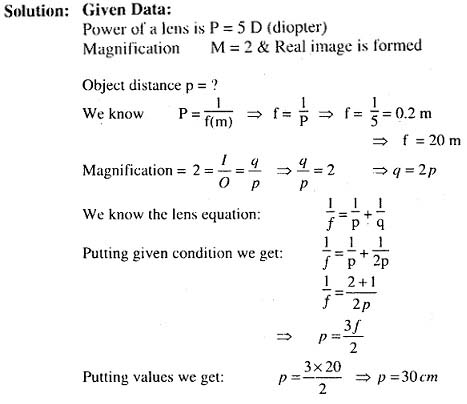Chapter 12 Geometrical Optics Numerical Problems
(a) Find the location and height of the image.
(b) Find the height of the image produced by the mirror if the object is twice as far from the mirror.
Q.12.7 Nabeela uses a concave mirror when applying makeup. The mirror has a radius of curvature of 38 cm.
(a) What is the focal length of the mirror?
(b) Nabeela is located 50 cm from the mirror. Where will her image appear?
(c) Will the image be upright or inverted?
Q. 12.1. An object 10.0 cm in front of a convex mirror forms an image 5.0 cm behind the mirror. What is the focal length of the mirror?

Q.12.2 An object 30 cm tall is located 10.5 cm from a concave mirror with focal length 16 cm. (a) Where is the image located? (b) How high is it?

Q.12.3 An object and its image in a concave mirror are of the same height, yet inverted, when the object is 20 cm from the mirror. What is the focal length of the mirror?
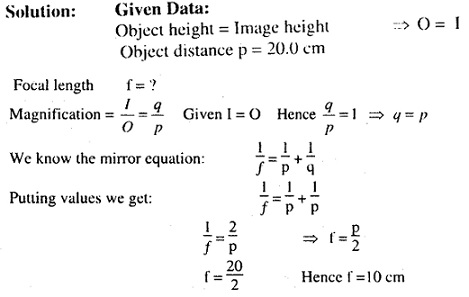
Q.12.4 Find the focal length of a mirror that forms an image 5.66 cm behind the mirror of an object placed at 34.4 cm in front of the mirror. Is the mirror concave or convex?
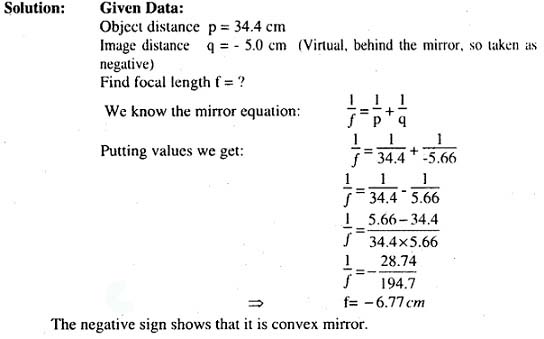
Q.12.5 An image of a statue appears to be 11.5 cm behind a concave mirror with focal length 13.5 cm. Find the distance from the statue to the mirror.
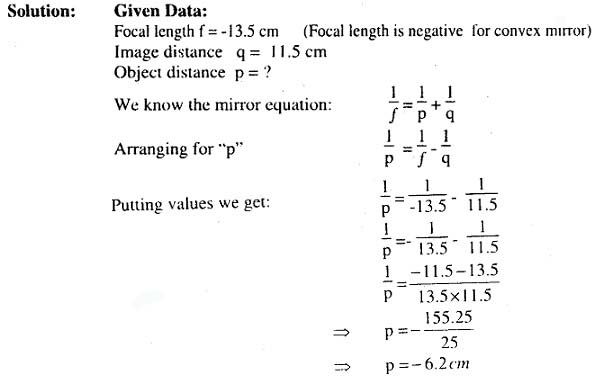
Q.12.6 An image is produced by a concave mirror of focal length 8.7 cm. The object is 13.2 cm tall and at a distance 19.3 cm from the mirror.
(a) Find the location and height of the image.
(b) Find the height of the image produced by the mirror if the object is twice as far from the mirror.
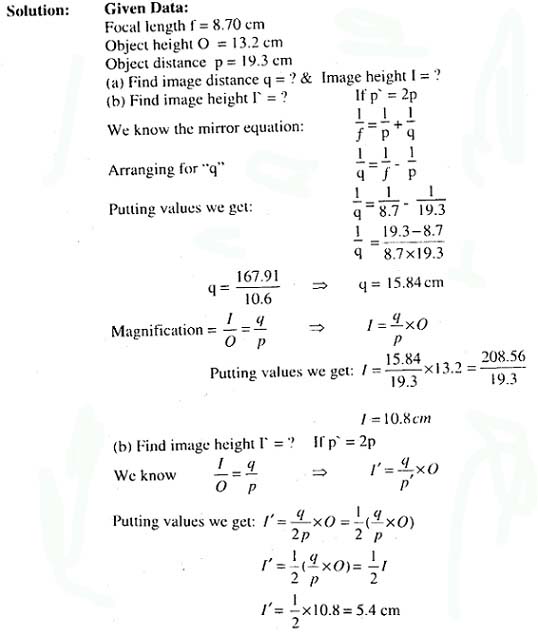
Q.12.7 Nabeela uses a concave mirror when applying makeup. The mirror has a radius of curvature of 38 cm.
(a) What is the focal length of the mirror?
(b) Nabeela is located 50 cm from the mirror. Where will her image appear?
(c) Will the image be upright or inverted?
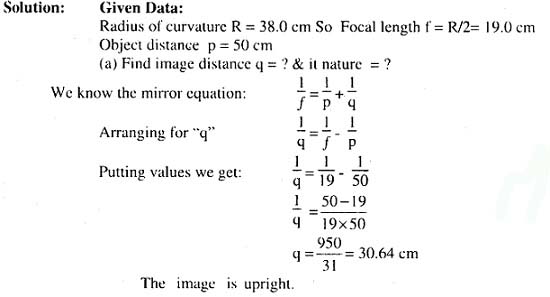
Q.12.8 An object 4 cm high is placed at a distance of 12 cm from a convex lens of focal length 8 cm. Calculate the position and size of the image. Also state the nature of the image.
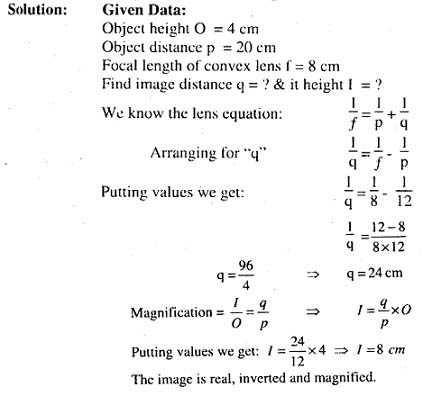
Q.12.9 An object 10 cm high is placed at a distance of 20 cm from a concave lens of focal length 15 cm. Calculate the position and size of the image. Also, state the nature of the image.
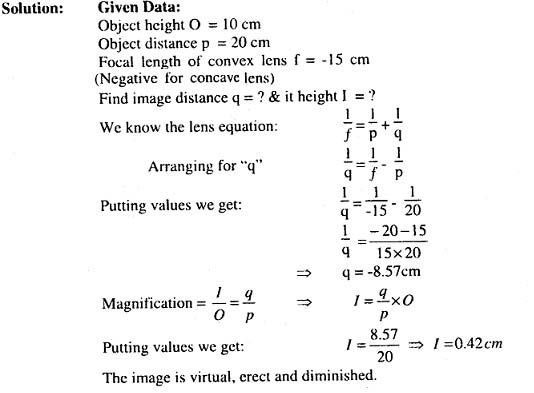
Q.12.10 A convex lens of focal length 6 cm is to be used to form a virtual image three times the size of the object. Where must the lens be placed?
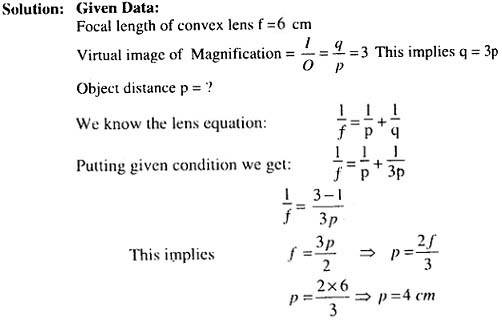
Q.12.11 A ray of light from air is incident on a liquid surface at an angle of incidence 35 . Calculate the angle of refraction if the refractive index of the liquid is 1.25. Also calculate the critical angle between the liquid air inter-face.
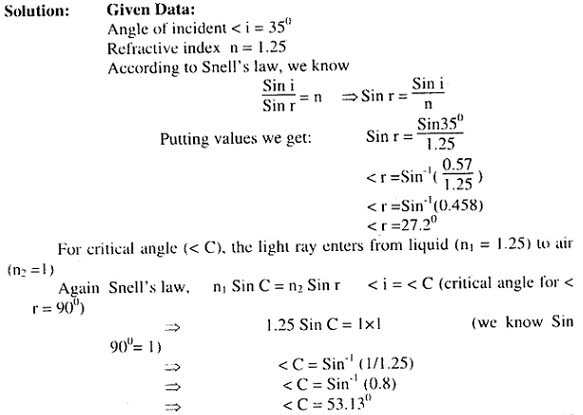
Q.12.12 The power of a convex lens is 5 D. At what distance the object should be placed from the lens so that its real and 2 times larger image is formed.
